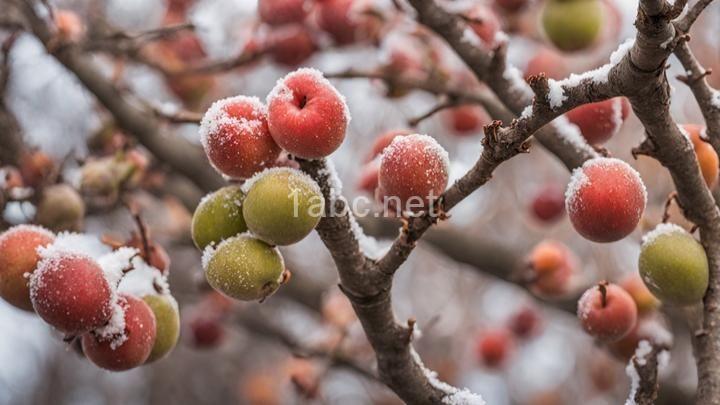A Beginner's Guide to Pruning Shrubs for a Lush Garden

Introduction:
Welcome to our friendly guide on pruning shrubs! Whether you're a gardening enthusiast or just starting out, this beginner's guide will help you learn the ins and outs of pruning to achieve a lush and beautiful garden. Pruning is an essential gardening practice that involves selectively trimming shrubs to promote healthy growth, improve their appearance, and maintain their overall well-being. So grab your gardening gloves and let's dive into the wonderful world of shrub pruning!
I. Understanding the Basics of Pruning
-
What is pruning and why is it important?
Pruning is the process of selectively removing specific parts of a shrub, such as branches, buds, or roots, to shape and maintain its overall health and appearance. It is important for several reasons. First, pruning helps to remove dead, damaged, or diseased branches, preventing the spread of pests and diseases to the rest of the shrub. Second, it promotes the growth of new shoots and flowers by removing old or overgrown branches. Lastly, pruning helps to maintain the desired size and shape of the shrub, preventing it from becoming unruly or unmanageable. -
Benefits of proper pruning for shrubs
Proper pruning offers a plethora of benefits for shrubs. It improves air circulation and sunlight penetration, reducing the risk of fungal infections and promoting healthy growth. Pruning also helps to shape the shrub, enhancing its overall appearance and creating a visually pleasing landscape. Additionally, it can increase the lifespan of the shrub by removing weak or overcrowded branches, allowing the plant to direct its energy towards stronger and healthier growth. -
Tools needed for successful pruning
To achieve successful pruning results, it's essential to have the right tools in your gardening arsenal. Here are some tools you'll need:
- Hand shears: Ideal for small branches and precision cutting.
- Loppers: Suitable for thicker branches that require more cutting force.
- Pruning saw: Used for larger branches or when a sawing motion is necessary.
- Gloves: Protect your hands from thorns, splinters, or sharp edges.
- Safety goggles: Ensure eye protection while pruning.
II. When to Prune Your Shrubs
- Different types of shrubs and their specific pruning times
Different shrubs have distinct growth patterns and flowering times, which influence the best time to prune them. Here are some common types of shrubs and their pruning schedules:
- Spring-flowering shrubs: Prune immediately after blooming, as they develop flower buds on old wood.
- Summer-flowering shrubs: Prune in late winter or early spring before new growth emerges.
- Evergreen shrubs: Prune in early spring to shape and remove any winter damage.
- Deciduous shrubs: Prune during late winter or early spring before new growth begins.
-
Seasonal considerations for optimal results
Consider the seasons when planning your pruning routine. During the dormant winter months, it's easier to see the shrub's structure and make precise cuts. Spring pruning allows you to remove dead or damaged branches while encouraging new growth. Summer pruning can be done to control excessive growth or shape the shrub, but be cautious not to remove too much foliage during this time. Lastly, fall pruning is generally avoided, as it may stimulate new growth that won't have time to harden off before winter. -
Signs that indicate it's time to prune your shrubs
Apart from considering the specific pruning times for different shrubs, there are some general signs that indicate it's time to prune:
- Dead or diseased branches: Remove any branches that show signs of decay, disease, or pest infestation.
- Overgrown or crossing branches: Thin out overcrowded areas and remove branches that rub against each other.
- Lack of flowering: If your shrub is not producing flowers or has a weak bloom, it may benefit from some selective pruning to encourage new growth.
- Shape and size control: Prune to maintain your shrub's desired shape and prevent it from outgrowing its intended space.
III. How to Prune Your Shrubs Step by Step
-
Assessing your shrub's health and shape
Before you begin pruning, take a close look at your shrub's overall health and shape. Check for any signs of disease, pest infestation, or damage. Assess its growth habit and decide on the desired shape you want to achieve. This will help guide your pruning decisions and ensure you're promoting the shrub's overall well-being. -
Removing dead, damaged, or diseased branches
Start by removing any dead, damaged, or diseased branches. Make clean cuts just above the branch collar, which is the swollen area where the branch meets the main stem. This will promote proper healing and prevent further damage to the shrub. Remember to sterilize your pruning tools before each cut to avoid spreading diseases. -
Shaping and thinning out overgrown branches
Next, focus on shaping and thinning out overgrown branches. Start by removing any crossing or rubbing branches that may cause damage or hinder healthy growth. Thin out overcrowded areas by selectively removing some branches to improve air circulation and light penetration. Aim to maintain a balanced and open structure for the shrub, allowing each branch to receive adequate sunlight. -
Promoting new growth through selective pruning
To encourage new growth and maintain a healthy shrub, consider selective pruning. Look for buds or nodes that point in the direction you want new branches to grow and make cuts just above them. This will redirect the plant's energy and stimulate growth in the desired areas. Avoid heavy pruning, especially if the shrub is stressed or weak, as it may impede its recovery. -
Proper techniques for cutting: angle, location, and size
When making cuts, follow these proper techniques:
- Angle: Cut at a 45-degree angle, sloping away from the bud or node, to prevent water accumulation and promote healing.
- Location: Cut just above the branch collar, avoiding leaving stubs or cutting too close to the main stem.
- Size: Remove a branch by making a clean cut close to the collar, but avoid removing more than 25% of the shrub's total foliage at once to prevent stress.
IV. Tips and Tricks for Successful Pruning
-
The importance of sterilizing your tools before each use
Sterilizing your pruning tools before each use is crucial to prevent the spread of diseases between plants. Use a disinfectant solution or wipe your tools with rubbing alcohol to kill any potential pathogens. This simple step can protect the health of your shrubs and ensure their longevity. -
Using the right tool for the job: shears, loppers, or saws?
Choose the appropriate pruning tool based on the size and thickness of the branches. Use hand shears for small branches up to ½ inch in diameter, loppers for branches up to 2 inches, and a pruning saw for thicker branches. Using the right tool will make the pruning process easier and more effective. -
Avoiding common mistakes beginners make when pruning shrubs
Here are some common mistakes beginners should avoid when pruning shrubs:
- Over-pruning: Avoid removing too much foliage at once, as it can stress the shrub and impede its growth.
- Improper cuts: Make clean cuts just above the branch collar and avoid leaving stubs or cutting too close to the main stem.
- Neglecting tool maintenance: Keep your pruning tools clean and sharp to ensure smooth and precise cuts.
- Pruning at the wrong time: Follow the specific pruning times for each type of shrub to maximize their health and flowering potential.
V. Caring for Your Shrubs After Pruning
- Proper post-pruning care: watering, fertilizing, and mulching
After pruning your shrubs, provide proper post-pruning care to help them recover and thrive:
- Watering: Ensure your shrubs receive adequate water, especially during dry periods, to support their recovery and new growth.
- Fertilizing: Apply a balanced fertilizer according to the specific needs of your shrubs. This will provide essential nutrients for healthy growth.
- Mulching: Apply a layer of organic mulch around the base of the shrub to retain moisture, suppress weeds, and insulate the roots.
-
Monitoring your shrub's recovery and growth progress
Keep a close eye on your shrubs after pruning to monitor their recovery and growth progress. Notice any signs of stress, such as wilting or discoloration, and take appropriate measures to address them. Regularly inspect the shrub for new growth and adjust your care routine as needed to support its health. -
Regular maintenance practices to keep your shrubs healthy
To keep your shrubs healthy and well-maintained, incorporate regular maintenance practices into your gardening routine. This includes periodic pruning to remove dead or overgrown branches, shaping to maintain the desired form, and monitoring for pests or diseases. Regular maintenance will ensure your shrubs continue to thrive year after year.
Conclusion:
Congratulations! You are now equipped with the knowledge needed to confidently prune your shrubs like a pro. Remember, practice makes perfect, so don't be discouraged if it takes some time to master these techniques. With patience, dedication, and a little bit of green-thumb magic, your garden will soon be flourishing with beautifully pruned shrubs. Happy pruning!
FREQUENTLY ASKED QUESTIONS
What is pruning and why is it important for shrubs?
Pruning is the act of selectively removing branches or stems from shrubs to promote healthy growth and shape the plant. It is an important practice for shrubs because it helps maintain their overall appearance, encourages flowering and fruit production, and improves air circulation and sunlight penetration.When shrubs are pruned, dead or damaged branches are removed, which prevents the spread of diseases and pests. Pruning also allows for the removal of crowded branches, which can improve air circulation and reduce the risk of fungal infections.
Another reason pruning is important for shrubs is that it stimulates new growth. By selectively removing branches, the plant is encouraged to produce more branches and foliage, leading to a fuller and more attractive appearance. Pruning can also promote the development of more flowers and fruits, enhancing the overall beauty and productivity of the shrub.
Additionally, pruning helps manage the size and shape of shrubs. Regular pruning can prevent shrubs from becoming overgrown and encroaching on other plants or structures in the garden. It allows for shaping and maintaining the desired form, ensuring that the shrub fits well within its surroundings.
In summary, pruning plays a vital role in the care and maintenance of shrubs. It promotes healthy growth, enhances the appearance of the plant, and improves its overall productivity. By practicing proper pruning techniques, gardeners can ensure the long-term health and beauty of their shrubs.
When is the best time to prune shrubs?
The best time to prune shrubs depends on the specific type of shrub you have. However, a general rule of thumb is to prune flowering shrubs right after they finish blooming. This allows them to set buds for next year's flowers. For deciduous shrubs, pruning in late winter or early spring, before new growth begins, is usually recommended. Evergreen shrubs can be pruned in late winter or early spring as well, but you can also prune them lightly throughout the growing season to maintain shape and control growth. It's important to research the specific pruning needs of your shrubs to ensure you're pruning them at the right time for optimal health and growth.
How do I know which branches to prune?
When determining which branches to prune, there are a few key factors to consider. First, look for any dead or damaged branches that may be inhibiting the overall health of the tree. These branches can be easily identified by their lack of foliage or signs of decay.Next, assess the overall shape and structure of the tree. Look for branches that are crossing or rubbing against each other, as well as any branches that are growing towards the center of the tree. These branches can cause damage and should be pruned to maintain the tree's natural form.
Consider the location of the branches as well. If there are any branches that are obstructing walkways, driveways, or interfering with power lines, these should be pruned for safety reasons.
It's also important to look for any overcrowding within the tree. If there are branches that are densely packed together, it can lead to poor air circulation and increased risk of disease. Pruning these branches will help promote better growth and overall tree health.
Lastly, if you're unsure about which branches to prune, it's always a good idea to consult with a professional arborist. They can provide expert advice and guidance based on the specific needs and characteristics of your tree.
Remember, pruning is an important part of tree care, but it's essential to do it correctly to avoid causing harm. Take your time, carefully assess the branches, and prune with caution to ensure the best possible outcome for your tree.
What tools do I need for pruning shrubs?
When it comes to pruning shrubs, having the right tools can make the task much easier and more efficient. Here are some essential tools you'll need:
-
Pruning Shears: Also known as hand pruners or secateurs, these are small, handheld tools designed for cutting small branches and stems. Look for a pair with sharp blades and a comfortable grip.
-
Loppers: Loppers are larger and more powerful than pruning shears, perfect for cutting thicker branches. They have long handles and a cutting mechanism that allows you to exert more force with less effort.
-
Hedge Trimmers: If you have shrubs with dense foliage, a hedge trimmer can be a handy tool. It has a set of sharp blades that move back and forth to trim hedges quickly and evenly.
-
Pruning Saw: For thicker branches that cannot be easily cut with loppers, a pruning saw is essential. It has a sharp, serrated blade that can easily cut through larger branches.
-
Gloves: Protecting your hands is crucial while pruning. Choose a pair of gloves that offer both comfort and protection, preferably made of a durable material like leather or synthetic leather.
-
Safety Glasses: When pruning shrubs, flying debris and branches can pose a risk to your eyes. Wearing safety glasses will help protect your eyes from any potential harm.
-
Protective Clothing: It's a good idea to wear long-sleeved shirts and pants to protect your arms and legs from scratches. Additionally, consider wearing closed-toe shoes to protect your feet.
Remember to clean and maintain your tools regularly to keep them in good working condition. Happy pruning!

